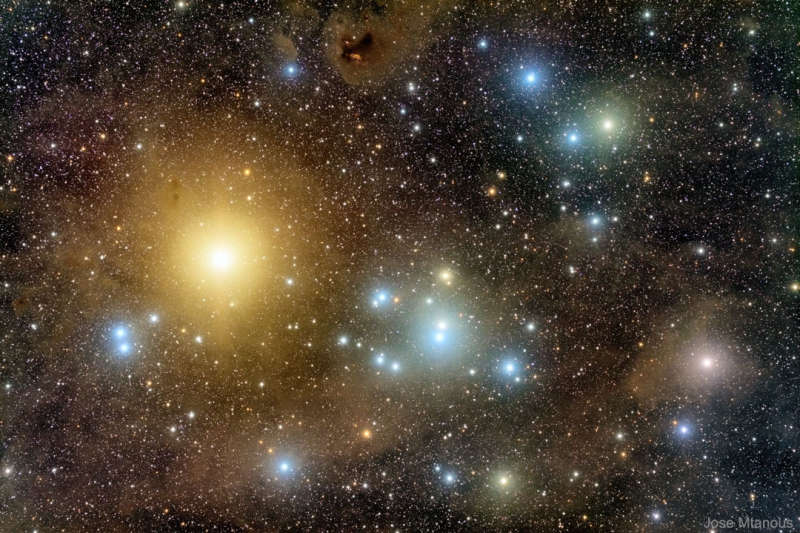
|
Credit & Copyright: Jose Mtanous
Explanation:
It is the closest cluster of stars to the Sun.
The Hyades
open cluster
is bright enough to have been remarked on even thousands of years ago,
yet is not as bright or compact as the
nearby Pleiades (M45) star cluster.
Pictured here is a particularly deep image of
the Hyades which has brings out vivid
star colors and faint coincidental nebulas.
The brightest star in the field is yellow
Aldebaran,
the eye of the bull toward the
constellation of Taurus.
Aldebaran, at 65
light-years away, is now known to be unrelated to the
Hyades cluster,
which lies about 150 light-years away.
The central
Hyades stars
are spread out over about 15 light-years.
Formed about 625 million years ago,
the Hyades likely shares a common origin with the
Beehive cluster (M44),
a naked-eye open star cluster toward the
constellation of Cancer, based on
M44's motion
through space and remarkably similar age.
|
January February March April May June July August September October November December |
| ||||||||||||||||||||||||||||||||||||||||||||||||
NASA Web Site Statements, Warnings, and Disclaimers
NASA Official: Jay Norris. Specific rights apply.
A service of: LHEA at NASA / GSFC
& Michigan Tech. U.
Based on Astronomy Picture
Of the Day
Publications with keywords: hyades - open cluster
Publications with words: hyades - open cluster
See also:
- APOD: 2025 August 7 B The Double Cluster in Perseus
- APOD: 2025 April 28 B Gum 37 and the Southern Tadpoles
- Open Star Clusters M35 and NGC 2158
- APOD: 2025 February 25 B M41: The Little Beehive Star Cluster
- APOD: 2025 February 11 B The Spider and the Fly
- APOD: 2024 October 29 B NGC 602: Stars Versus Pillars from Webb
- NGC 7789: Caroline s Rose
